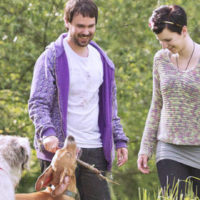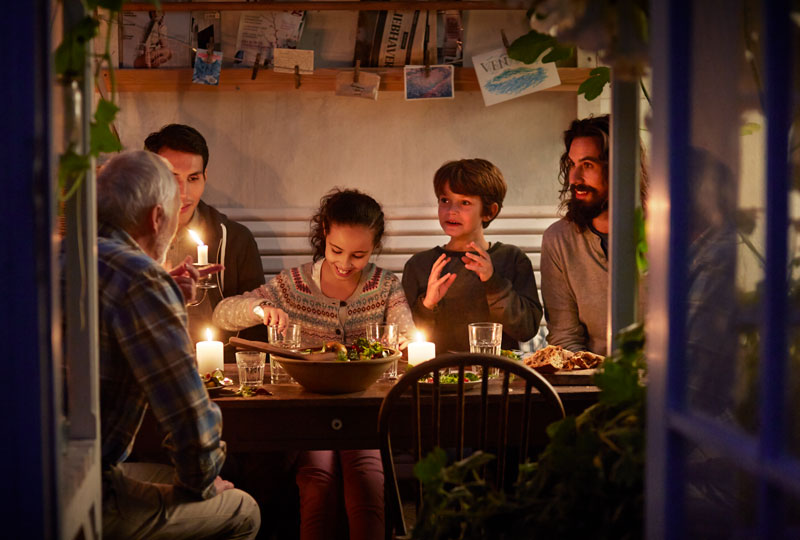This Danish concept encourages peace, comfort and connection.
In Danish, “hygge” (HOO-gah) is an adjective, a noun and a verb. It means a state of contentment from small moments of comfort, coziness and connection. The word derives from a 16th-century Norwegian term, “hugga,” meaning to comfort or to console.
Hygge is a combination of the space you’re in, the people you’re with and the intention to create a sanctuary. Helen Russell, author of “The Year of Living Danishly: Uncovering the Secrets of the World’s Happiest Country,” describes hygge as “taking pleasure from the presence of gentle, soothing things.” In Denmark, where the winter months are long and dark – some days see only six hours of daylight and temperatures of -22 F! – hygge has perhaps served as the ultimate coping strategy.
The importance of hygge
The Danish cultivate hygge as a lifestyle from birth to old age, according to Meik Wiking, the founder and chief executive of the Happiness Research Institute, a think tank based in Copenhagen that explores why some societies are happier than others. A “hyggelig” (hygge-like) lifestyle contributes to Danes’ ranking among the happiest people in the world year after year. The 2023 World Happiness Report, published by the Sustainable Development Solutions Network, shows Denmark ahead of nearly all other nations (except Finland) in a survey about happiness. (The U.S. comes in 15th in the report’s ranked list.)
Meik Wiking writes in his book, “The Little Book of Hygge: The Danish Way to Live Well,” that hygge is about “an atmosphere and an experience. It is about being with the people we love. A feeling of home. A feeling that we are safe. Hygge is the sensation you get when you’re cuddled up on a sofa, in cozy socks under a soft throw, during a storm. It’s that feeling when you’re sharing comfort food and easy conversation with loved ones at a candlelit table. It is the warmth of morning light shining just right on a crisp blue-sky day.”
“The Danes got it right,” said Jim Kendall, a licensed clinical social worker and manager for Vanderbilt University Medical Center’s Employee Assistance Program. “Creating a hyggelig environment is one way of practicing mindfulness. As we have all learned from the last few pandemic years, taking some time to be intentional about recharging and enjoying the moment is necessary for self-care.”
Five ways to incorporate hygge into your daily life
1. Lower the lights, and bring out the candles.
Proper lighting is essential, according to the Danes’ practice of developing coziness. That means several light sources, scattering pools of warm light throughout a space; avoid harsh overhead lighting. If you ask a Danish person, they’re likely to tell you that candles are the most important part of creating a hyggelig atmosphere at home.
Remember, however, that candles are a fire hazard. The National Candles Association has safety tips for burning candles, including the wise advice to never leave a burning candle unattended. If open-flamed candles present too much hazard for your living space, you can instead install a dimmer on your lights, use battery-operated candles or put up string lights. Research supporting enhanced lighting can be found in the Journal of Economics, which found that people perceived warm, dimmer light as more relaxing than bright white light.
2. Turn off the technology and be in the moment.
Hygge is about giving the responsible, stressed-out, perhaps overachieving part of yourself a break, said Wiking. “It is about experiencing happiness in simple pleasures.” Take time to savor small moments such as carving out 30 minutes in the morning to enjoy watching the sun come up with a hot drink in silence. Or taking an early morning walk with a friend. After work, put phones and computers away for at least part of the evening, turn off the television and focus on your companion, family, friends or yourself. This time can include a board game, preparing a meal, listening to soft music, taking a bath or reading.
3. Hang out with friends and family.
In a hygge lifestyle, there is an emphasis on connecting with family, friends and loved ones. Spending time with those most important to us creates a sense of belonging and connection that research continues to show impacts our health and well-being. “The most important social relationships are close relationships in which you experience things together with others, and experience being understood; where you share thoughts and feelings; and both give and receive support,” Wiking explained. There’s strong evidence that having nurturing social connections is beneficial for physical and emotional health. Several such studies are included in a review published in the journal Annual Review of Psychology.
4. Get comfy.
The Danes take pride in creating a comforting space. Author Russell found that most Danish homes are “monuments to hygge.” In addition to describing things as hyggelig (hygge-like), Danes are also obsessed with adding hygge to other words to describe things. For example, a hyggekrog is a nook where you can curl up and get comfortable. Imagine a window seat where you can wrap yourself up in a blanket and watch the world go by, or your favorite armchair where you do all of your reading. Comfortable clothing, pillows, throw blankets and thick socks are also ways to create this effect.
5. Incorporate natural elements into your home.
Nature can help us feel more relaxed and at ease, so bringing nature indoors is important to developing a hygge-like sanctuary. Potted plants, natural sunlight streaming in windows and wood furniture are examples. The sound of a water fountain, a crackling fire or birds chirping are also ways to bring nature inside. Nature-inspired colors, such as green, cream and brown chosen for a living space are a significant part of setting a cozy stage for yourself and your guests.
Hygge is about taking care of yourself and doing the small ordinary things that give you pleasure. Really, the main component of hygge is feeling present and spending quality time with yourself or your loved ones in an environment that feels like you are taking care of yourself. Isn’t that sure to spark contentment and coziness for anyone?
Stacey Kendrick, MS, is a health educator with more than 20 years of experience in wellness and population health. She is a mother to two adult daughters. In her free time, she teaches healthy cooking classes, runs, gardens and enjoys backyard bonfires.

Care close to home
If you or your loved one is feeling sick or has a minor injury, Vanderbilt Health offers dozens of walk-in locations with convenient hours throughout Middle Tennessee—and can even bring a provider to you.

